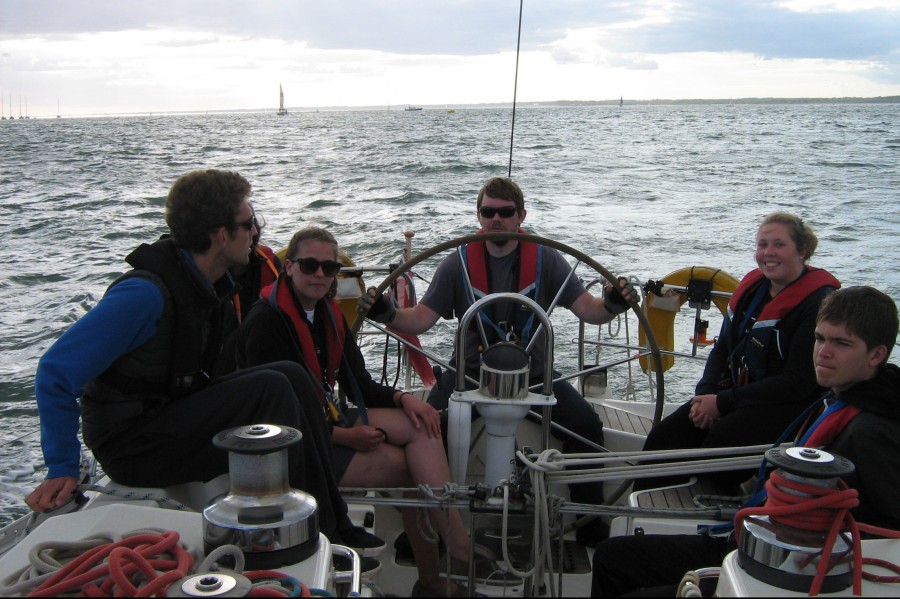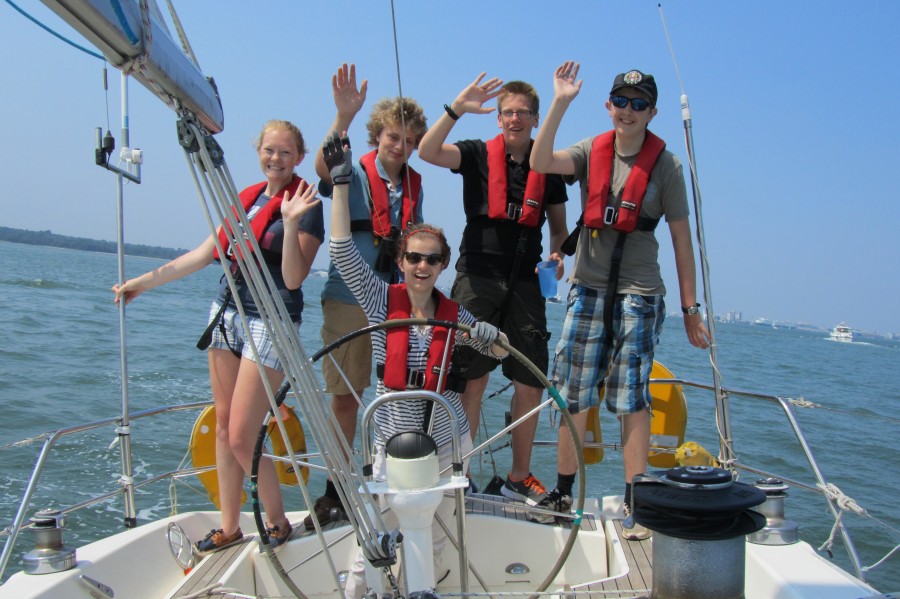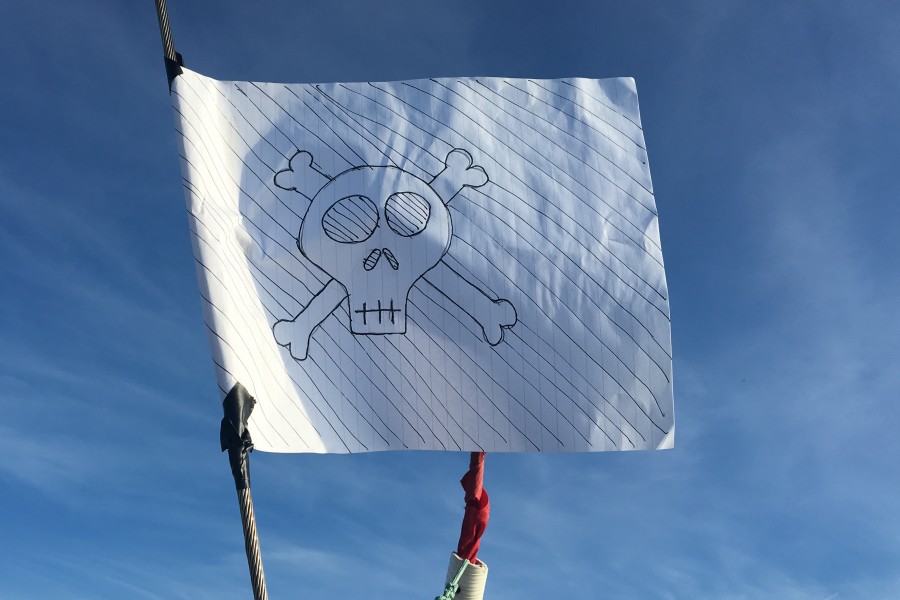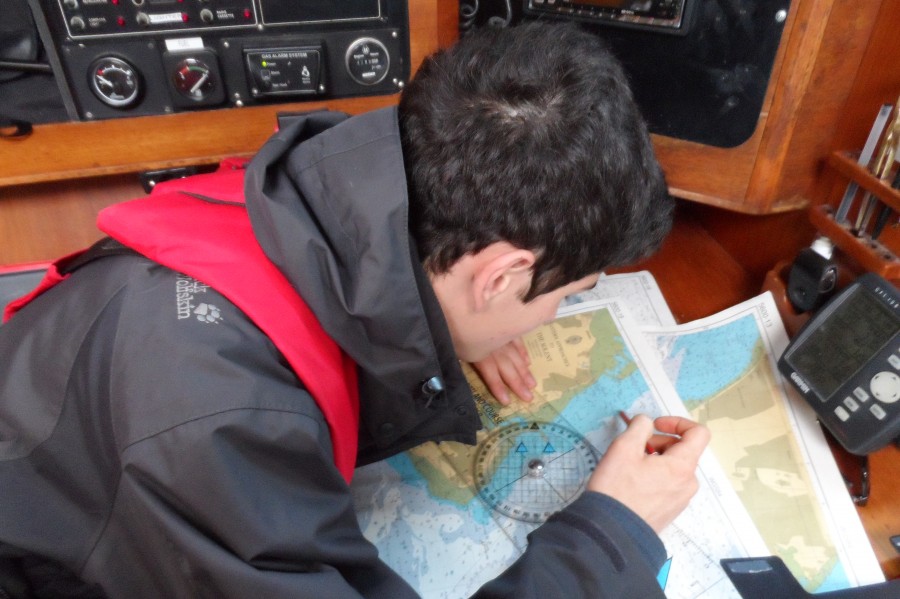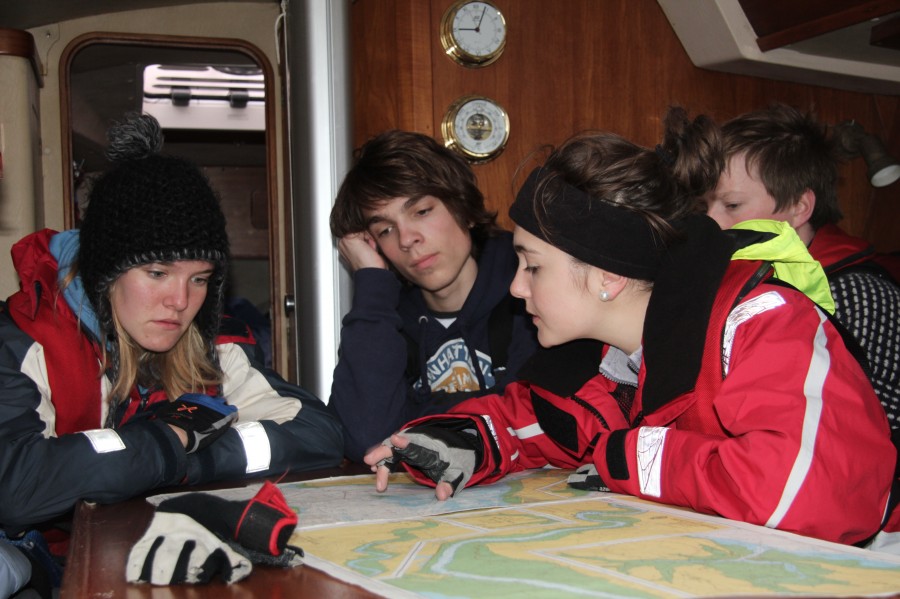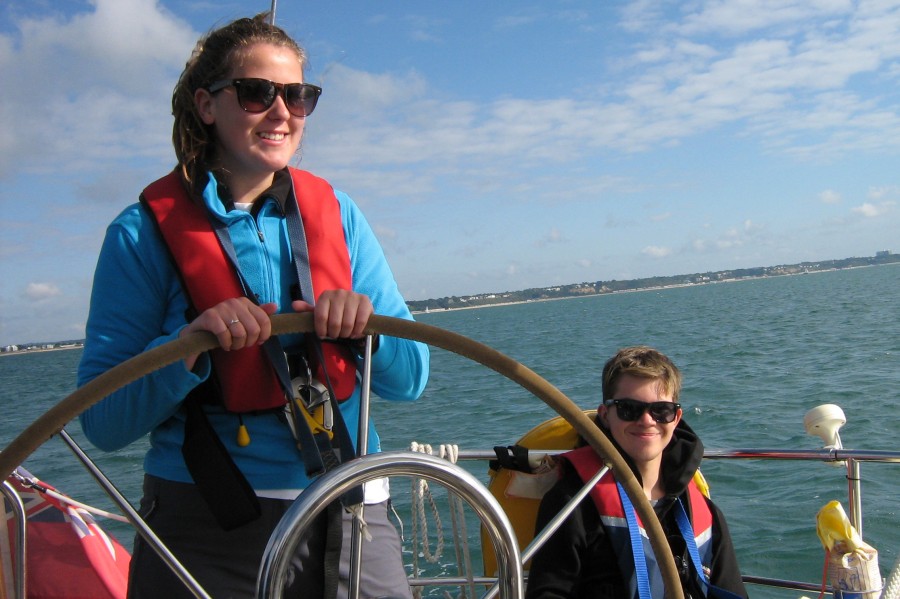Teenagers - RYA Day Skipper Course
Bookings Open for 2026
Reservations for 2026 courses can be made over the phone by contacting our bookings office on office on 02380 457733. To secure a course booking a £200 deposit is required. Don't miss the boat!
Course Description:
This course is the next step for teenagers who are confident sailors. The Day Skipper course is aimed at those who have the necessary experience and command skills, to begin taking charge and skippering a yacht. This course is aimed at those aged 16 -17 years old (Pupils who are 18 in year 13/ still in full time education, are able to join our Youth courses on thier own or with their friends in the same year group.)
There are actually two separate courses at this level, one classroom based and the other a practical on the water course. The first is the Day Skipper shore based course. During this 5 day course, you will be taught the rudiments of navigation, chart work, pilotage, tides, meteorology and safety. At the end of this week, those who reach the required standard will be awarded the RYA Day Skipper shore based course completion certificate. This is a non residential course from our base in Hamble. It can also be taken as a correspondence course at home, in your own time.
Once you have mastered the theory, it is time to put what you have learnt in the classroom, into practise on the water. This is where the fun really starts! Under the guidance of your RYA instructor, you will be fully involved in the planning of the days events. You will take it in turns to act as skipper for a number of passages. Your instructor will be with you every step of the way to explain, demonstrate and encourage you, as you build up your experience and confidence in this new role. Deciding how to leave the pontoon, manoeuvring the yacht safely out of harbour; deciding on the sail configuration and executing a passage plan - is all in a days work for an aspiring Day Skipper!
On successful completion of the 5 day practical course, you will be able to skipper a yacht in familiar waters by day light hours. To get the most out of this course, you need to meet the RYA pre course requirements listed below.
Pre-course experience:
The minimum pre course experience for this course is 5 days, 100 nautical miles and 4 night hours on board a cruising yacht. We would recommend that most students have more experience than this prior to attending this course. Along side command skills, those considering the Day Skipper practical course should have a sound knowledge of the Competent Crew syllabus and be confident with helming and basic sail trim on all points of sail. Day Skipper Course participants should be able to take charge when tacking or gybing and should be able to recognise when close to a gybe situation to avoid any accidental gybes. Students should know the correct order for putting in and taking out reefs, be able to use winches and jammers safely and know how to secure the yacht along side.
Assumed theoretical knowledge:
Day Skipper shore based course completion certificate or the equivalent knowledge of someone who has attended the course
Minimum age: 16
Teenagers Day Skipper practical course fees include:
• Food on board (from lunch time on the first day)
• All safety equipment
• BBQ ashore
• Mooring fees
• RYA Certificate
All you need to bring with you for an enjoyable week, is your personal kit, a bit of spending money and lots of enthusiasm!
Why not join our 9 day Combined RYA Day Skipper course and gain both your theory and practical qualification in one go!
![]() Duke of Edinburgh's Award - Residential Opportunity
Duke of Edinburgh's Award - Residential Opportunity
2026 DATES
EASTER
- 30 March - 03 April 2026
- 06 - 10 April 2026
SUMMER HALF TERM
- 25 - 29 May 2026
SUMMER
- 22 - 26 June 2026
- 29 June - 03 July 2026
- 06 - 10 July 2026
- 13 - 17 July 2026
- 20 - 24 July 2026
- 27 - 31 July 2026
- 05 - 09 August 2026
- 10 - 14 August 2026
- 17 - 21 August 2026
- 24 - 28 August 2026
- 29 August -02 September 2026
9-day combined RYA Day Skipper theory & practical course *
01 - 09 August 2026 - £1,250.00
OCTOBER HALF TERM
- 26 - 30 October 2026
*As numbers are restricted on this particular course, reservations can only be made over the phone by contacting our bookings office on office on 02380 457733.
Reservations can be made over the phone by contacting our bookings office on office on 02380 457733.


